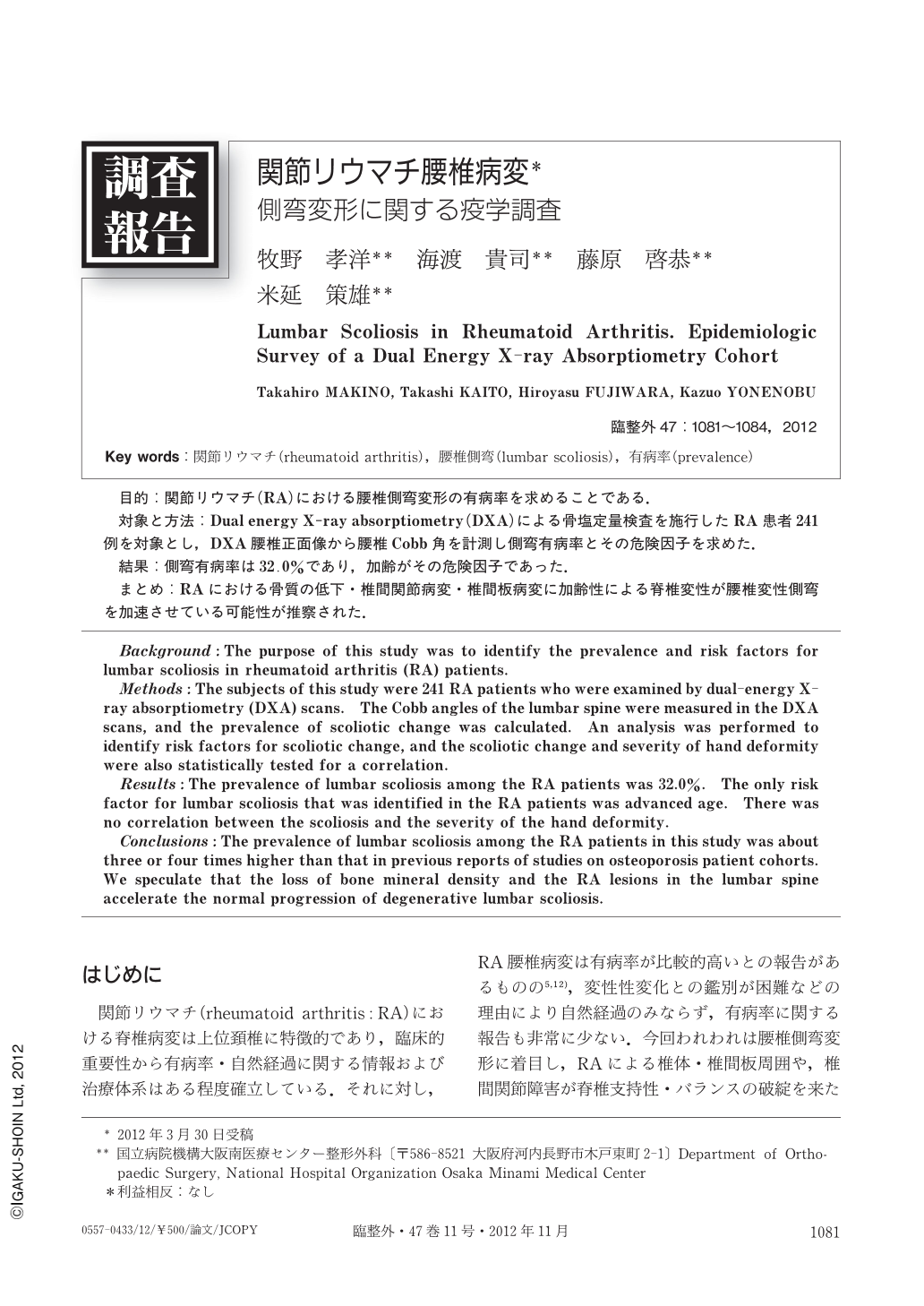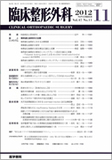Japanese
English
- 有料閲覧
- Abstract 文献概要
- 1ページ目 Look Inside
- 参考文献 Reference
目的:関節リウマチ(RA)における腰椎側弯変形の有病率を求めることである.
対象と方法:Dual energy X-ray absorptiometry(DXA)による骨塩定量検査を施行したRA患者241例を対象とし,DXA腰椎正面像から腰椎Cobb角を計測し側弯有病率とその危険因子を求めた.
結果:側弯有病率は32.0%であり,加齢がその危険因子であった.
まとめ:RAにおける骨質の低下・椎間関節病変・椎間板病変に加齢性による脊椎変性が腰椎変性側弯を加速させている可能性が推察された.
Background:The purpose of this study was to identify the prevalence and risk factors for lumbar scoliosis in rheumatoid arthritis (RA) patients.
Methods:The subjects of this study were 241 RA patients who were examined by dual-energy X-ray absorptiometry (DXA) scans. The Cobb angles of the lumbar spine were measured in the DXA scans, and the prevalence of scoliotic change was calculated. An analysis was performed to identify risk factors for scoliotic change, and the scoliotic change and severity of hand deformity were also statistically tested for a correlation.
Results:The prevalence of lumbar scoliosis among the RA patients was 32.0%. The only risk factor for lumbar scoliosis that was identified in the RA patients was advanced age. There was no correlation between the scoliosis and the severity of the hand deformity.
Conclusions:The prevalence of lumbar scoliosis among the RA patients in this study was about three or four times higher than that in previous reports of studies on osteoporosis patient cohorts. We speculate that the loss of bone mineral density and the RA lesions in the lumbar spine accelerate the normal progression of degenerative lumbar scoliosis.

Copyright © 2012, Igaku-Shoin Ltd. All rights reserved.


